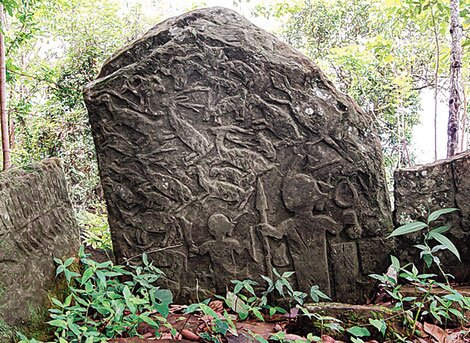Indian History
Kawtchhuah Ropui Heritage Site, Mizoram
- 11 Feb 2019
- 2 min read
Archaeological survey of India has discovered traces of ancient civilization in Vangchhia, a village in Mizoram’s Champhai district bordering Myanmar.
- The site has been named as the Kawtchhuah Ropui heritage site. Kawtchhuah Ropui means the Great Entranceway.
- Kawtchhuah Ropuithe heritage site is Mizoram’s first site which is under the protected monuments of Archaeological Survey of India’s (ASI).
- The area is part of the Lower Himalayas and has rows of steep hills largely made up of various kinds of sandstone shading from light grey to blackish.
- The site, measuring about 45 sq km has yielded pictographs etched on large stone slabs, menhirs (large standing stones), a necropolis (a large cemetery), a water pavilion among other artifacts.
- The ancient people of Vangchhia also carved terraces on rocks for their settlement — the main excavated site consists of 15 such terraces.
- There are over 100 menhirs, rising almost 15 feet tall, stand at the excavation site depicting floral, animal and humans.
- Water pavilion has strategically drilled holes — between one foot and one meter across — spread over several sandstone slopes and used for storing water.
- ASI has not been able to accurately date the Vangchhia settlement. Initially, ASI estimated
site to be from the 15th century. - However, recently, the ASI team has also discovered neolithic caves near Vangchhia, indicating that the lost civilization could be much older.




